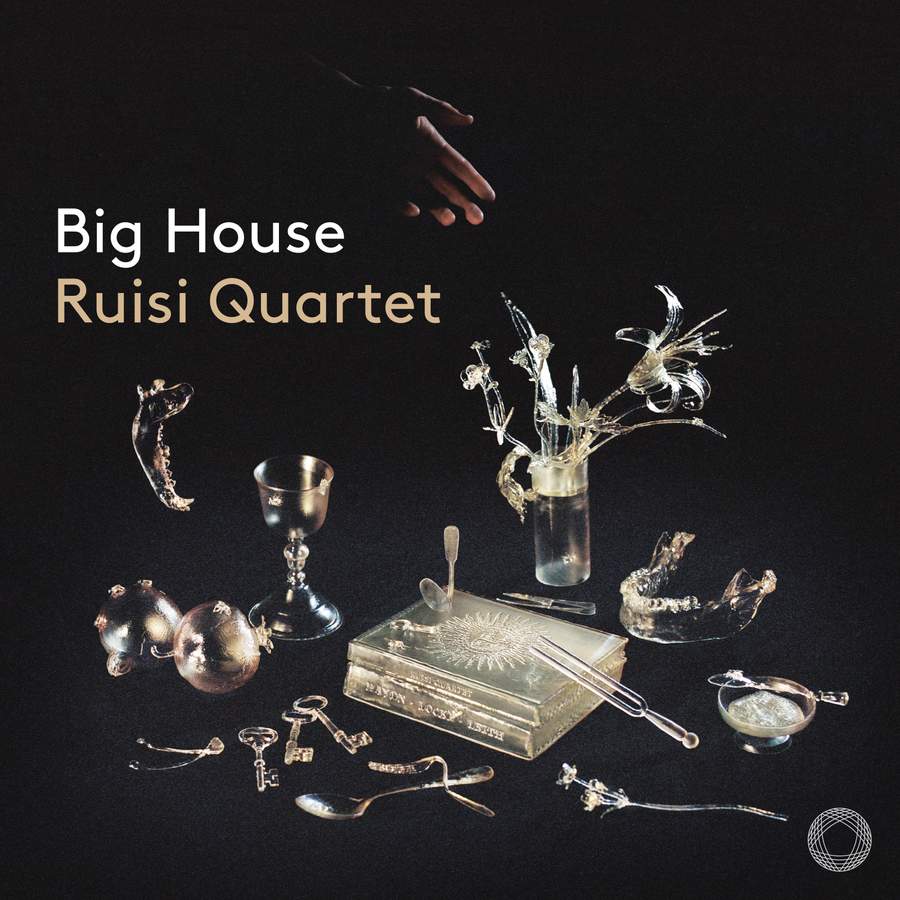HAYDN; LEITH 'Big House'
View record and artist detailsRecord and Artist Details
Genre:
Chamber
Label: Pentatone
Magazine Review Date: 05/2023
Media Format: CD or Download
Media Runtime: 83
Mastering:
DDD
Catalogue Number: PTC5187 040

Tracks:
| Composition | Artist Credit |
|---|---|
| (6) String Quartets (Divertimentos), Movement: D minor |
Joseph Haydn, Composer
Ruisi Quartet |
| Fantasie |
Matthew Locke, Composer
Ruisi Quartet |
| Suite No 5, Movement: A Different Fantasie |
Oliver Christophe Leith, Composer
Ruisi Quartet |
| The Big House |
Oliver Christophe Leith, Composer
Ruisi Quartet |
| (6) String Quartets (Divertimentos), 'Sun', Movement: F minor |
Joseph Haydn, Composer
Ruisi Quartet |
Author: David Threasher
The Ruisi Quartet waited 10 years before making their debut recording. When they finally got around to it, at a time when the global shutdown was at its height, they holed themselves up in Snape Maltings and brought the microphones in close for a programme in which two of Haydn’s early minor-key quartets frame a new work by Oliver Leith (b1990). An odd coupling? Perhaps, although they have in common both composers’ joyful engagement with the sound of strings and the endless possibilities offered by this homogeneous instrumental grouping.
That close miking intensifies the ensemble’s deeply personal approach to this music. Leader Alessandro Ruisi phrases like a singer, pulling and stretching passages that Haydn conceived for his Esterházy concertmaster, Luigi Tomasini. Tempos can be dangerously drawn out – the opening Moderato of the D minor Quartet, Op 9 No 4, is slower even than the London Haydn Quartet (Hyperion) but remains gripping throughout thanks to the concentration that is evident from the performance. Neither this nor the F minor, Op 20 No 5 (not a slower repeat of Op 9 No 4, as indicated by the packaging) displays Haydn in playful mode, and the Ruisi’s rich, integrated tone, stripped of all but occasional vibrato, mines the tragedy of each work in a way that is singularly spellbinding.
A palate-cleansing Fantasie by Matthew Locke is then mirrored by Leith’s take on Locke’s Restoration gestures, smeared with slides and portamentos, quarter-tones and all manner of string effects that the 17th-century composer could only have imagined in a fever dream. The Big House is the real thing: initially inspired by photographs of abandoned mansions in Leith’s native Ireland, it presents seven images linked in the composer’s mind to their pictorial titles. Leith revels in ‘blurry visions, hazy horizons … realness, rawness, scruffiness, roughness’ (Kate Molleson’s booklet note) and creates music whose bigness contains the very seeds of its own decay. We hear the last twitches of dying insects in ‘Blue Bottles’, and the viol tones essayed in the Locke return as shafts of light in ‘Sunshine Choir’. The Big House is predominantly slow and meditative, repetition deployed to hypnotising effect.
It’s hard to estimate the size of the overlap on the Venn diagram between those eager to encounter an exciting new compositional voice on one hand and some deeply individual Haydn on the other. But it’s fascinating to hear the two shake hands across the divide.
Discover the world's largest classical music catalogue with Presto Music.

Gramophone Digital Club
- Digital Edition
- Digital Archive
- Reviews Database
- Full website access
From £8.75 / month
Subscribe
Gramophone Full Club
- Print Edition
- Digital Edition
- Digital Archive
- Reviews Database
- Full website access
From £11.00 / month
Subscribe
If you are a library, university or other organisation that would be interested in an institutional subscription to Gramophone please click here for further information.




